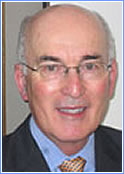Mediation or Collaborative Divorce? Why Not Both?
Mediation or Collaborative Divorce? Why Not Both?Family Divorce Solutions member Fred Glassman, JD, presents his Medicollab™ Model at Upcoming Conference in Los Angeles
Contact: Gayle Lynn Falkenthal, APR
619-997-2494 or gayle@falconvalleygroup.com
Sherman Oaks – With the emergence of the Collaborative Law Process, often referred to as Collaborative Divorce, as an option for families over the past 25 years, more options sometimes mean more difficulty choosing the divorce method that is the best fit: pro per, litigation, mediation, or Collaborative Divorce.
Couples who want to avoid going to court can find it confusing selecting either mediation or Collaborative Divorce. Many couples want to try and resolve their differences through mediation, but still want the skilled guidance of an attorney, especially when there are complex issues involving significant financial assets or child custody considerations.
Family Divorce Solutions member and past Collaborative Practice California board president Frederick J. Glassman, JD, will present a workshop along with attorney Forrest (Woody) Mosten, JD on Glassman’s innovative practice of Collaborative Divorce and mediation, which he calls “Medicollab™” at the upcoming Collaborative Practice California “Celebration 10” Conference in Los Angeles on Saturday, April 25, at 4 p.m.
Glassman says Medicollab™ can serve as a useful tool for all Collaborative Practitioners to consider in many cases, and to discuss with clients to enhance their informed consent prior to selecting an appropriate process option. In mediation, the mediator works with the clients but may also meet with clients and their attorneys during the process. In the unlikely event mediation breaks down, the consulting attorneys can still represent the parties in court if necessary. This is not possible in a Collaborative Divorce.
“While most Collaborative Divorce cases are successful, some are not, and this can be frustrating,” said Glassman. “When your Collaborative case reaches an impediment and impasse looms, you don’t need to panic and you don’t need to let your case fall out. You can try Medicollab™. It is a true blending of collaboration and mediation. At our workshop, Woody and I hope to enlighten participants about another valuable tool in the divorce process toolkit that helps Collaborative Divorce professionals guide clients to the best possible fit to resolve their divorce as swiftly and respectfully as possible,” said Glassman.
Ten years ago, Collaborative Practice professionals in California established a statewide organization of Collaborative Practice groups, called Collaborative Practice California. (CP Cal). It is among the largest state Collaborative Practice organizations in the United States.
With the definition of family in flux, the definition of divorce is also changing. Members of CPCal are responsible professionals who are problem solvers ready to face the challenge of changing the way both professionals and their clients approach resolution: less costly and less damaging.
See the full schedule of conference speakers and sessions here. All sessions are open to credentialed news media. Please contact Gayle Lynn Falkenthal, Falcon Valley Group, for access information at gayle@falconvalleygroup.com
For additional Celebration 10 information, contact Celebration 10 Conference Coordinator Paula Jackson at 415-897-2398 or email Paula at info@cpcal.com
About Family Divorce Solutions of San Fernando Valley
Formed in October 2011, Family Divorce Solutions of San Fernando Valley is comprised of experienced, licensed and trained attorneys, mental health professionals and financial neutrals. Our area of expertise Collaborative law, which is mainly applied in divorce cases and family law. Our goal is to get both parties together and quickly come to a solution without going to court. For more information, please visit Family Divorce Solutions at www.familydivorcesolutions.com

